姐妹炖罐店(桂香街总店)
No comments yet
|$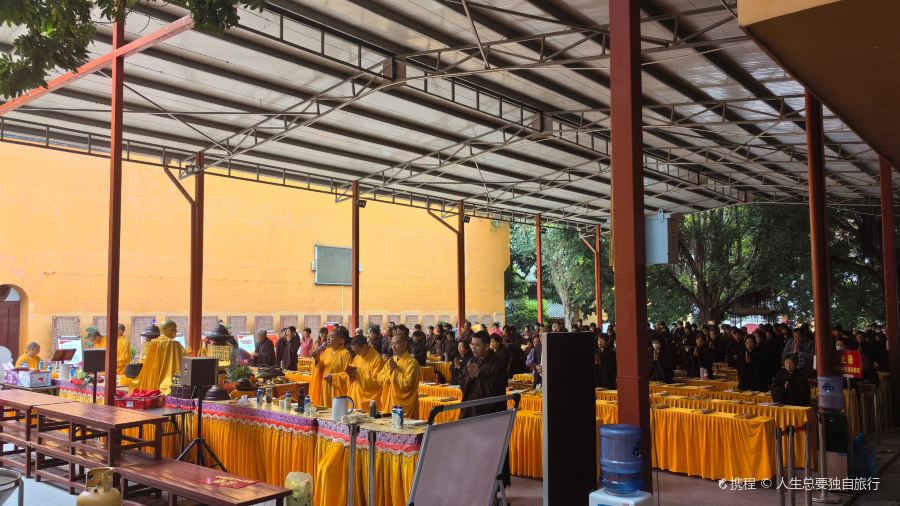
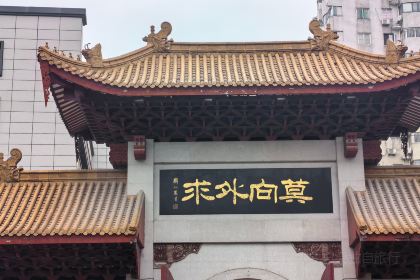
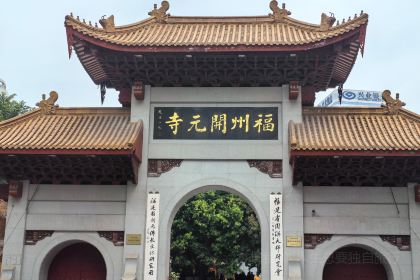
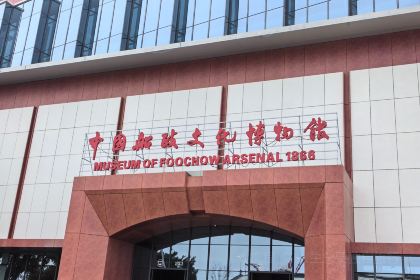
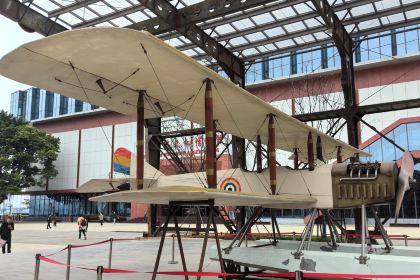
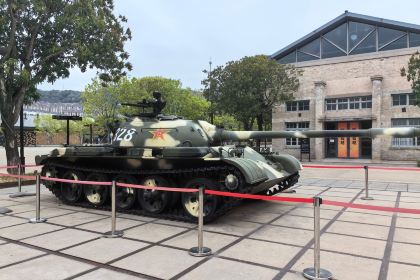
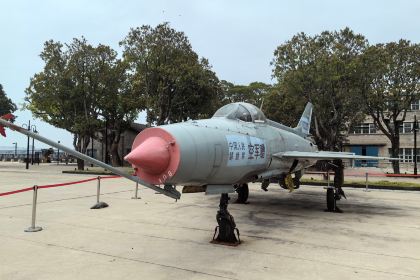
More
Currently closed|Open at 11:00 todayShow more
13509361271
No. 1 Store 1, Block 1, Guimei District, 23-1 Guixiang Street
 人生总要独自旅行Why two days and two nights? Because the sea was not nice on cloudy days, we directly passed Pingtan and mainly focused on eating in Fuzhou city~
Let’s talk about eating first. I recommend a few must-try restaurants:
Stew pot: It really suits my taste, so I ate it three times in two days. Stew pot restaurants are open all day, so you can eat at off-peak hours.
Guangda Glasses Stew Pot (Guangda Branch): Highly recommended! The pork ribs pot is added with wooden fish pieces, which is particularly delicious. The brain flower stewed egg is also super delicious, not fishy at all.
Sister Stew Pot Restaurant (Guixiang Street Main Branch): Delicious, but not as good as the Glasses one. The store is bigger than the Glasses.
Xuejun Shengji (Guangde Community Branch): It is more of a self-service canteen. The folk Buddha Jumps Over the Wall at 35 is very famous. In addition to the stew pot, there are many other local dishes. It is recommended for one person or a few people to take a table together. It is near Shangxiahang, and you can go there to eat after visiting Shangxiahang.
Meat dumpling and fish ball laohua: I recommend eating it while visiting Sanfang Qixiang. Tongli meat dumpling and Yonghe fish ball are both good, but to be honest, I can't really tell the difference.
Peanut soup and taro paste: I went to Erlongbo Yuanxiao (Shangxiahang Branch), which is located in Shangxiahang. Peanut soup can be served cold or hot, depending on the weather. The taro paste with lard and sesame is really super fragrant. I had meat-filled Yuanxiao, 6 pieces in a bowl, the first 3 are okay, but the rest will be a bit greasy.
Licorice guava: A big queue on Daming Food Street. If your hotel is nearby, you can order takeout. The boss will mix the ingredients according to the type and maturity of the fruit. It is very delicious. I recommend red and white guava, green mango, tomato and black plum. Just order three or four combinations. Don't try to order one type easily, you will get tired of it...
Not so recommended:
Lychee and pork fried liver: The second most familiar Fuzhou dish, these two dishes I tried in old Fuzhou. Relatively recommend the southern fried liver, which is fragrant and tender; the lychee meat is really no different from the sweet and sour pork tenderloin.
Buddha Jumps Over the Wall: It can be an affordable one. The Buddha Jumps Over the Wall in Fuzhou is basically a clear soup, unlike the thick yellow soup sold outside. It is fresh, but it may be better to eat a few cans of various stews than to eat a can of hundreds of dollars. Wouldn't that be more fragrant?
Let's talk about shopping:
Sanfang Qixiang and Shangxiahang are placed on the same day. Visit Sanfang Qixiang first. There are many memorial halls and former residences in it, and there is a latest time requirement. This day is also a day for eating while shopping. It is recommended to navigate to Tangmo Tea in Sanfang Qixiang, and you can directly navigate to Erlongbo in Shangxiahang. Going there for food will make shopping more fun.
If you have enough time, you can visit Youth Square, Jiefang Bridge, and Yantaishan Park. These are all beautiful during the day and at night, depending on the time arrangement. There is a commercial street next to Yantai Mountain, which is more literary and petty bourgeoisie, and there are also many foods (but they are more like soufflé Swiss rolls and Japanese food).
If you don’t have enough time, just wait until the next day. There is a bus from the Shipbuilding Museum in Mawei District to the main urban area that goes directly to Youth Square.
The next day, visit Kaiyuan Temple, Xichan Temple, and Shipbuilding Museum. It should be around 3 o'clock after visiting the Shipbuilding. You can consider taking a bus to Gushan to watch the sunset, or go directly back to the main urban area to continue eating.
Specifically:
Fuzhou Kaiyuan Temple is very small. It is a royal temple in the Tang Dynasty. It mainly worships Medicine Buddha to eliminate disasters and prolong life. There are many locals who burn incense. You can take a bunch of incense outside the Medicine Buddha Hall and light it all the way to worship. Behind the plaque of "Fuzhou Kaiyuan Temple" are four big characters "Don't seek outside", which is profound.
Xichan Temple is much larger, and it costs 20 tickets. The building is very beautiful and it is also very good to take pictures. There is a thousand-year-old lychee tree and many super large banyan trees.
You must go to the China Shipbuilding Cultural Museum. It is the site of the Shipbuilding Cultural Museum established after the Opium War. Later, China's first domestically-made steel warship and the first homemade aircraft were also produced here. Yan Fu, Deng Shichang and others were also graduates of the Shipbuilding. The entire cultural park is very large. In addition to the museum, there are also factory sites, which show in detail the composition and design drawings of China's first homemade aircraft, Type A-1. There was also a Dunhuang cultural and art exhibition before 5/3, which was very nice. The information annotations on the side were also very detailed, so you don't have to worry about not understanding it.
Mawei District is a bit far away, so you can choose to take a taxi (40-50 yuan) and then take the bus back. The taxi destination is set at the "Shipbuilding Cultural Museum". Take the bus to the "Shipbuilding" station, and walk the least from the door near the museum~
人生总要独自旅行Why two days and two nights? Because the sea was not nice on cloudy days, we directly passed Pingtan and mainly focused on eating in Fuzhou city~
Let’s talk about eating first. I recommend a few must-try restaurants:
Stew pot: It really suits my taste, so I ate it three times in two days. Stew pot restaurants are open all day, so you can eat at off-peak hours.
Guangda Glasses Stew Pot (Guangda Branch): Highly recommended! The pork ribs pot is added with wooden fish pieces, which is particularly delicious. The brain flower stewed egg is also super delicious, not fishy at all.
Sister Stew Pot Restaurant (Guixiang Street Main Branch): Delicious, but not as good as the Glasses one. The store is bigger than the Glasses.
Xuejun Shengji (Guangde Community Branch): It is more of a self-service canteen. The folk Buddha Jumps Over the Wall at 35 is very famous. In addition to the stew pot, there are many other local dishes. It is recommended for one person or a few people to take a table together. It is near Shangxiahang, and you can go there to eat after visiting Shangxiahang.
Meat dumpling and fish ball laohua: I recommend eating it while visiting Sanfang Qixiang. Tongli meat dumpling and Yonghe fish ball are both good, but to be honest, I can't really tell the difference.
Peanut soup and taro paste: I went to Erlongbo Yuanxiao (Shangxiahang Branch), which is located in Shangxiahang. Peanut soup can be served cold or hot, depending on the weather. The taro paste with lard and sesame is really super fragrant. I had meat-filled Yuanxiao, 6 pieces in a bowl, the first 3 are okay, but the rest will be a bit greasy.
Licorice guava: A big queue on Daming Food Street. If your hotel is nearby, you can order takeout. The boss will mix the ingredients according to the type and maturity of the fruit. It is very delicious. I recommend red and white guava, green mango, tomato and black plum. Just order three or four combinations. Don't try to order one type easily, you will get tired of it...
Not so recommended:
Lychee and pork fried liver: The second most familiar Fuzhou dish, these two dishes I tried in old Fuzhou. Relatively recommend the southern fried liver, which is fragrant and tender; the lychee meat is really no different from the sweet and sour pork tenderloin.
Buddha Jumps Over the Wall: It can be an affordable one. The Buddha Jumps Over the Wall in Fuzhou is basically a clear soup, unlike the thick yellow soup sold outside. It is fresh, but it may be better to eat a few cans of various stews than to eat a can of hundreds of dollars. Wouldn't that be more fragrant?
Let's talk about shopping:
Sanfang Qixiang and Shangxiahang are placed on the same day. Visit Sanfang Qixiang first. There are many memorial halls and former residences in it, and there is a latest time requirement. This day is also a day for eating while shopping. It is recommended to navigate to Tangmo Tea in Sanfang Qixiang, and you can directly navigate to Erlongbo in Shangxiahang. Going there for food will make shopping more fun.
If you have enough time, you can visit Youth Square, Jiefang Bridge, and Yantaishan Park. These are all beautiful during the day and at night, depending on the time arrangement. There is a commercial street next to Yantai Mountain, which is more literary and petty bourgeoisie, and there are also many foods (but they are more like soufflé Swiss rolls and Japanese food).
If you don’t have enough time, just wait until the next day. There is a bus from the Shipbuilding Museum in Mawei District to the main urban area that goes directly to Youth Square.
The next day, visit Kaiyuan Temple, Xichan Temple, and Shipbuilding Museum. It should be around 3 o'clock after visiting the Shipbuilding. You can consider taking a bus to Gushan to watch the sunset, or go directly back to the main urban area to continue eating.
Specifically:
Fuzhou Kaiyuan Temple is very small. It is a royal temple in the Tang Dynasty. It mainly worships Medicine Buddha to eliminate disasters and prolong life. There are many locals who burn incense. You can take a bunch of incense outside the Medicine Buddha Hall and light it all the way to worship. Behind the plaque of "Fuzhou Kaiyuan Temple" are four big characters "Don't seek outside", which is profound.
Xichan Temple is much larger, and it costs 20 tickets. The building is very beautiful and it is also very good to take pictures. There is a thousand-year-old lychee tree and many super large banyan trees.
You must go to the China Shipbuilding Cultural Museum. It is the site of the Shipbuilding Cultural Museum established after the Opium War. Later, China's first domestically-made steel warship and the first homemade aircraft were also produced here. Yan Fu, Deng Shichang and others were also graduates of the Shipbuilding. The entire cultural park is very large. In addition to the museum, there are also factory sites, which show in detail the composition and design drawings of China's first homemade aircraft, Type A-1. There was also a Dunhuang cultural and art exhibition before 5/3, which was very nice. The information annotations on the side were also very detailed, so you don't have to worry about not understanding it.
Mawei District is a bit far away, so you can choose to take a taxi (40-50 yuan) and then take the bus back. The taxi destination is set at the "Shipbuilding Cultural Museum". Take the bus to the "Shipbuilding" station, and walk the least from the door near the museum~Reviews of 姐妹炖罐店(桂香街总店)
Some reviews may have been translated by Google Translate
0/5
All (4)
Latest
Photo reviews (1)
Why two days and two nights? Because the sea was not nice on cloudy days, we directly passed Pingtan and mainly focused on eating in Fuzhou city~ Let’s talk about eating first. I recommend a few must-try restaurants: Stew pot: It really suits my taste, so I ate it three times in two days. Stew pot restaurants are open all day, so you can eat at off-peak hours. Guangda Glasses Stew Pot (Guangda Branch): Highly recommended! The pork ribs pot is added with wooden fish pieces, which is particularly delicious. The brain flower stewed egg is also super delicious, not fishy at all. Sister Stew Pot Restaurant (Guixiang Street Main Branch): Delicious, but not as good as the Glasses one. The store is bigger than the Glasses. Xuejun Shengji (Guangde Community Branch): It is more of a self-service canteen. The folk Buddha Jumps Over the Wall at 35 is very famous. In addition to the stew pot, there are many other local dishes. It is recommended for one person or a few people to take a table together. It is near Shangxiahang, and you can go there to eat after visiting Shangxiahang. Meat dumpling and fish ball laohua: I recommend eating it while visiting Sanfang Qixiang. Tongli meat dumpling and Yonghe fish ball are both good, but to be honest, I can't really tell the difference. Peanut soup and taro paste: I went to Erlongbo Yuanxiao (Shangxiahang Branch), which is located in Shangxiahang. Peanut soup can be served cold or hot, depending on the weather. The taro paste with lard and sesame is really super fragrant. I had meat-filled Yuanxiao, 6 pieces in a bowl, the first 3 are okay, but the rest will be a bit greasy. Licorice guava: A big queue on Daming Food Street. If your hotel is nearby, you can order takeout. The boss will mix the ingredients according to the type and maturity of the fruit. It is very delicious. I recommend red and white guava, green mango, tomato and black plum. Just order three or four combinations. Don't try to order one type easily, you will get tired of it... Not so recommended: Lychee and pork fried liver: The second most familiar Fuzhou dish, these two dishes I tried in old Fuzhou. Relatively recommend the southern fried liver, which is fragrant and tender; the lychee meat is really no different from the sweet and sour pork tenderloin. Buddha Jumps Over the Wall: It can be an affordable one. The Buddha Jumps Over the Wall in Fuzhou is basically a clear soup, unlike the thick yellow soup sold outside. It is fresh, but it may be better to eat a few cans of various stews than to eat a can of hundreds of dollars. Wouldn't that be more fragrant? Let's talk about shopping: Sanfang Qixiang and Shangxiahang are placed on the same day. Visit Sanfang Qixiang first. There are many memorial halls and former residences in it, and there is a latest time requirement. This day is also a day for eating while shopping. It is recommended to navigate to Tangmo Tea in Sanfang Qixiang, and you can directly navigate to Erlongbo in Shangxiahang. Going there for food will make shopping more fun. If you have enough time, you can visit Youth Square, Jiefang Bridge, and Yantaishan Park. These are all beautiful during the day and at night, depending on the time arrangement. There is a commercial street next to Yantai Mountain, which is more literary and petty bourgeoisie, and there are also many foods (but they are more like soufflé Swiss rolls and Japanese food). If you don’t have enough time, just wait until the next day. There is a bus from the Shipbuilding Museum in Mawei District to the main urban area that goes directly to Youth Square. The next day, visit Kaiyuan Temple, Xichan Temple, and Shipbuilding Museum. It should be around 3 o'clock after visiting the Shipbuilding. You can consider taking a bus to Gushan to watch the sunset, or go directly back to the main urban area to continue eating. Specifically: Fuzhou Kaiyuan Temple is very small. It is a royal temple in the Tang Dynasty. It mainly worships Medicine Buddha to eliminate disasters and prolong life. There are many locals who burn incense. You can take a bunch of incense outside the Medicine Buddha Hall and light it all the way to worship. Behind the plaque of "Fuzhou Kaiyuan Temple" are four big characters "Don't seek outside", which is profound. Xichan Temple is much larger, and it costs 20 tickets. The building is very beautiful and it is also very good to take pictures. There is a thousand-year-old lychee tree and many super large banyan trees. You must go to the China Shipbuilding Cultural Museum. It is the site of the Shipbuilding Cultural Museum established after the Opium War. Later, China's first domestically-made steel warship and the first homemade aircraft were also produced here. Yan Fu, Deng Shichang and others were also graduates of the Shipbuilding. The entire cultural park is very large. In addition to the museum, there are also factory sites, which show in detail the composition and design drawings of China's first homemade aircraft, Type A-1. There was also a Dunhuang cultural and art exhibition before 5/3, which was very nice. The information annotations on the side were also very detailed, so you don't have to worry about not understanding it. Mawei District is a bit far away, so you can choose to take a taxi (40-50 yuan) and then take the bus back. The taxi destination is set at the "Shipbuilding Cultural Museum". Take the bus to the "Shipbuilding" station, and walk the least from the door near the museum~